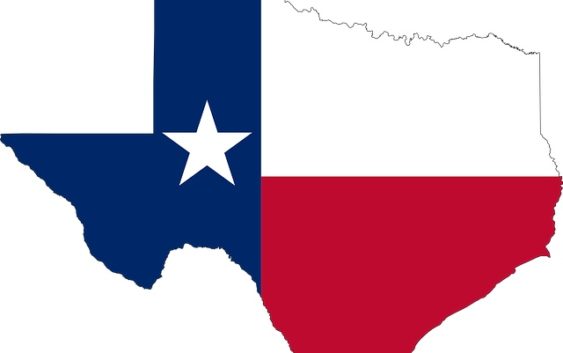- Rock Hill storm damage costs are 'somewhere around $5 million.' That number doesn't include damage to personal property
- Rock Hill storm damage costs are 'somewhere around $5 million.' That number doesn't include damage to personal property
- ‘Somewhere around $5 million’ | Rock Hill officials see major storm damage costs
- The deadliest tornadoes to ever hit Austin
- Whiteville resident recalls events from Tuesday nights tornado
The Role Climate Change Plays In Weather Extremes

9(MDA3MTA1NDEyMDEyOTkyNTU3NzQ2ZGYwZg004))
MICHEL MARTIN, HOST:
Let’s talk about the insane weather this week that left much of the Midwest frozen. The polar vortex is finally moving on. But, before it did, temperatures fell 30 degrees below zero in some places, and hundreds of temperature records were broken. And, once again, President Trump used the extreme temperatures to question the reality of climate change, tweeting, quote, “what the hell is going on with global warming? Please come back fast. We need you,” unquote. OK. So let’s answer that question.
Why, if the climate is changing and the Earth’s atmosphere is warming, does it still get so cold? To help us understand what’s been going on this week, we’ve called Katharine Hayhoe once again. She is a climate scientist and the director of the Climate Science Center at Texas Tech University. Professor Hayhoe, thank you so much for joining us once again.
KATHARINE HAYHOE: Thank you for having me.
MARTIN: First, I think it would be helpful if you could explain the difference between climate and temperature. For example, this week, Australia was experiencing record heat, and even Alaska was unusually warm. So what is the difference between climate and temperature?
HAYHOE: Well, weather is what we experience from day to day, and that is what sticks in our mind. We all remember the crazy heat wave or the ice storm or the blizzard. But climate is the long-term average of weather over at least 20 to 30 years.
MARTIN: So NOAA, the National Oceanic and Atmospheric Administration, tweeted this week, quote, “winter storms don’t prove that global warming isn’t happening,” unquote. So how is it possible for warmer temperatures to yield yet more snow or these just huge amounts of snow?
HAYHOE: Well, so, first of all, people say – why is it so cold out? And the first answer to that question is it’s winter. And then the second answer to that is it’s weather because, you know, we get hot and cold and wet and dry. That’s weather. But the third answer is, actually, the really interesting one to us, scientists. And it’s the fact that as the planet gets warmer, our air can hold more water vapor.
And so when a storm comes along now as opposed to 50 or a hundred years ago, there’s more water vapor in the atmosphere for the storm to sweep up and dump on us. Now, if it’s above freezing, that precipitation falls as rain. But if it’s below freezing, it can even fall as snow. And our winters – make no mistake – are warming. In fact, winters are warming faster than any other season. But it still gets below freezing, so we still have snow. But we can see more of it when it’s warmer.
MARTIN: Could all of this mean more rainy days or potential hurricanes? You talked about that more vapor in the atmosphere, overall. Does this mean we could have more rainy days and more potential hurricanes, even fiercer hurricanes?
HAYHOE: We are not seeing a change in the number of hurricanes because hurricane formation depends on a lot of different factors, some of which are kind of canceling each other out when it comes to a changing climate. But what we are seeing is that hurricanes and typhoons and cyclones, as they’re called in other parts of the world – they are very unique storms that get their energy from warm ocean water. And over 90 percent of the extra heat that is being trapped inside the Earth’s climate system from burning coal and gas and oil – over 90 percent of that heat is going into the ocean, where it is fueling stronger storms. And, as you just alluded to, they have a lot more rainfall associated with them today than they would have 50 or a hundred years ago.
MARTIN: And is it accurate that – I mean, anecdotally, it seems that we’re seeing fewer cold snaps, but they’re more extreme. Is that true?
HAYHOE: We are seeing fewer cold spells, and that is what the data shows. But part of this is actually psychological because winter is warming. And so we have gotten used to what would have been considered remarkably mild winters 30 or 50 years ago. So now, when we have a cold outbreak, we’re like, oh, my goodness. This is unbelievable. Where did this come from? And the reality is a lot of our cold weather is we’re just not used to anymore.
And then, of course, we still do break cold temperature records. In fact, in 2017 – across the United States, over 10,000 cold temperature records were broken in 2017 alone. But, the same year, over 30,000 hot temperature records were broken. So it’s that ratio that’s showing us that, yes, we can feel break cold and hot temperature records. That’s just weather. But long-term, decade by decade, we’re breaking many more high-temperature records because the planet is warming.
MARTIN: That was Katharine Hayhoe, director of the Climate Science Center at Texas Tech University speaking to us from her home in Lubbock, Texas. Professor Hayhoe, thanks so much for talking to us.
HAYHOE: Thank you. Transcript provided by NPR, Copyright NPR.